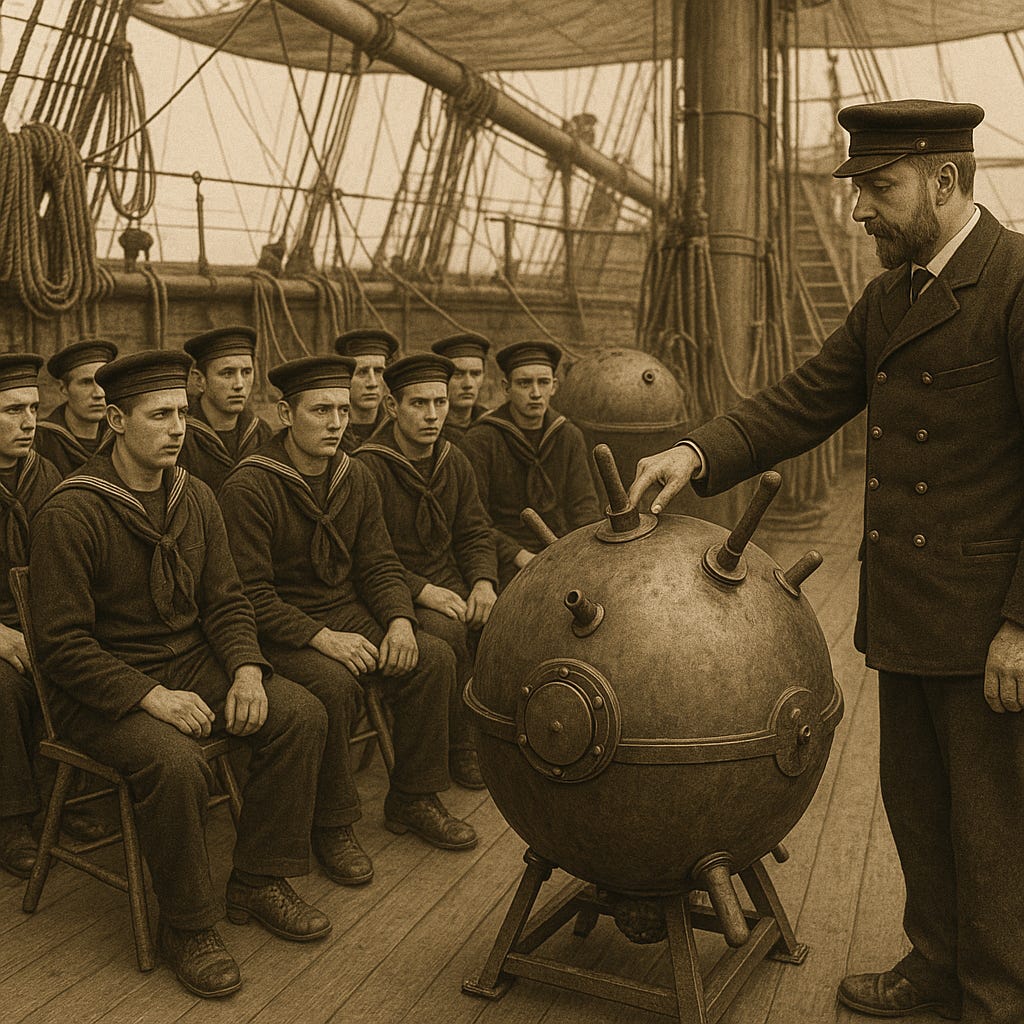By the late 19th century, the River Clyde was more than just a waterway—it was a national asset. Glasgow and the surrounding Clydebank area had become the industrial heart of Britain's shipbuilding might. During peacetime, this fueled economic growth. But in times of war, it posed a strategic vulnerability. If the Clyde were blocked or captured, Britain's naval manufacturing and wartime logistics could collapse. It’s in this light that Britain’s military planners, with the insight of Major-General Sir Andrew Clarke, envisioned the Clyde as a militarized zone—ready to be defended not by ships alone, but by a hidden underwater threat: mines.
The Rise of the Underwater Arsenal
In 1885, Sir Andrew Clarke proposed a revolutionary defense system for the Clyde's entrance at the Tail of the Bank near Fort Matilda. At its core were submarine mines—iron cases filled with guncotton, an explosive far more powerful than traditional gunpowder. These devices weren’t scattered randomly. They were carefully placed and could be detonated electrically from the shore, creating an invisible wall of destruction.
Guncotton had emerged in the 19th century as one of the first high explosives. Made from nitrated cellulose, it was lighter and more stable than nitroglycerin, but deadly when ignited. Its adoption by the military marked a shift in warfare technology, bringing chemistry into the arsenal of national defense.
Electric firing systems added precision and safety. Operators stationed onshore could control detonation, minimizing accidental explosions and ensuring only enemy ships triggered the mines. This marriage of chemical and electrical engineering was cutting-edge at the time—turning peaceful waters into a high-tech death trap.
Volunteer Miners: Civilians Preparing for War
What’s striking is that this wasn't solely a military operation. The government created a Mining Volunteer Corps—civilians trained to handle and deploy these dangerous devices. These volunteers learned to lay mines, connect detonation wires, and operate firing systems with discipline and precision. Their presence reflected a broader Victorian ethos of preparedness: the belief that every citizen could, and should, contribute to national defense.
The use of volunteers also made practical sense. Full-time military engineers were limited, and the complexity of mine-laying—especially in busy civilian harbors—required local knowledge. These civilians, many with backgrounds in engineering, mechanics, or maritime trades, provided the manpower and expertise needed to defend the Clyde.
Their training was extensive. Ground and mechanical mines were deployed in mock exercises. Volunteers had to navigate the dual dangers of handling explosives and operating electrical systems under simulated war conditions. The fact that these operations took place in peacetime shows how seriously Britain took the threat of naval invasion—even when diplomacy prevailed.
Hidden Power: The Psychological and Tactical Impact
The deployment of submarine mines in the Clyde wasn't just a physical deterrent—it was psychological. Enemy ships considering an incursion into the river now faced uncertainty: where were the mines, how many, and could they be avoided? This fear created hesitation, which was itself a form of defense.
Moreover, the mines allowed Britain to avoid more drastic measures, like sinking a ship to block the river—a tactic once considered but rejected due to the need to keep the Clyde open for commerce and military supply chains. Mines offered flexibility. They could be armed or disarmed as needed, and their strategic placement allowed for both protection and operational continuity.
This system anticipated a future where technological warfare would become the norm. While today we think of drones and cyber-attacks, in the 1880s, electrified mines represented the bleeding edge. They combined emerging scientific disciplines to create a defense mechanism that was invisible, intelligent, and terrifying.






